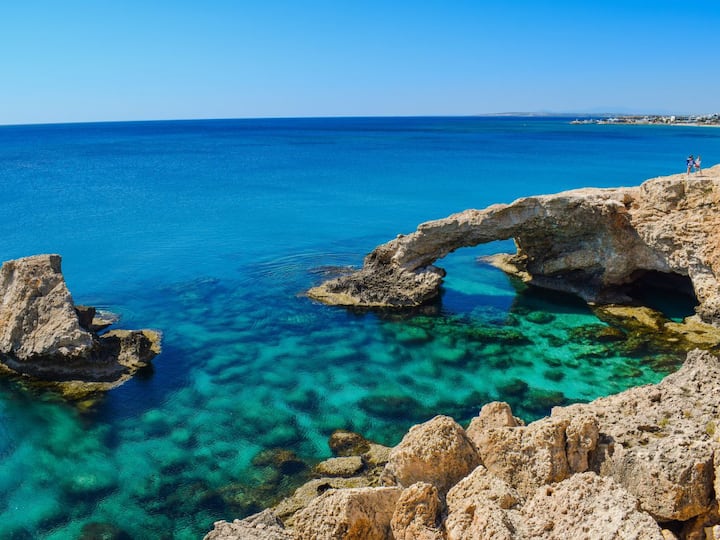Església
Αγίου Γεωργίου Μακρή
1 resident recomana,
Suggeriments de la gent de la zona
near the famous "Kamares" the old aqueduct of the city during the Turkish occupation, is built on a small hill, the beautiful Byzantine church of Agios Georgios Makris. Until the 1970s he was still far from residential area, in the wasteland, gazing west Stavrovouni, south of Salt Lake and to the east and north Larnaca Today, with the expansion that took the city after the events of 1974 and the refugees, the deserted church found within the limits of the city. Nevertheless, in a sparsely populated area, the physical isolation of the hill, and the extensive precinct of the temple, which includes the whole hill where it is built, ensure that it continues to maintain the appearance desert chapel, away from noise, traffic and the world. This church is known as "Monastery of Agios Georgios Makris," unlike other St. George, the "Short". The name "Short-Makris," which distinguishes the two temples -Pedralbes monastery Larnaca, due to their distance from the old Larnaca (parishes Savior and Ag. Ioannou) that it was the main city the Frankish (13th -16 th century). When exactly was the monastery of St. George Makris and what the exact history we know of. The only information we have are: In the Byzantine years until the Franks in this location was built in the village of agrin, whose parish churches was St. George Makris and St. Andronicus. And the former was still preserved, while St. Andronicus ruins, which were maintained until a few decades ago somewhere in today's street April 1 (stone pile with a wooden cross in the middle, where the older lit candle) completely disappeared. This village, unknown and forgotten today, reported by the chronicler Leontio Machairas, the G.Voustronio etc., as well as maps of Cyprus designed the Venetian era. So even the beginning of the 20th century preserved in the adjacent farmland pieces of marble capitals, foundation of old buildings and medieval pottery from a white clay, called "bowls of St. Andronicus," most of which are exported and sold outside Cyprus. The church of St. George Byzantine style, cruciform with a dome, which is evidence of age old enough, even before it entered the Frankish influence rate prevailing on the arched roof, in which the most in Cyprus during the Turkish churches have been built. As the most likely date of erection is considered the 12th century (R.Gunnis) or the beginning of the 14th (G.Kyriazis, I.Sykoutris). In 1424-6 the agrin village was destroyed, along with Klavdia, the Kellia and other villages of the Mamelukes, during the war between the franc King Janus of Cyprus and the Sultan of Egypt. Remembering the agrin was maintained until the end of the 18th century, because until then, the Codes of I.M.Kitiou temple still called "St. George agrin, so-called Makris' (Codes: A, p.12 D p .41-42). In 1706 the church in caring 'Manoil priest "anekainisthi fundamentally, but the original design of the church was kept. The renovation that included the "anistorisi 'with frescoes. Today only the big mural of Saint George, in the apse, northern wall, below which there is the following informative for that renovation inscription: "Anekenisti and anistorithi this the panseptos and sacred temple of the holy glorious and Great Martyr George the Triumphant , for assistance and effort of Mr. evlavestatou Manoil priest and his elder Mary. Mnisthii Ke, and assistance Leontiou priest eikonomou the monastery of Saint Lazarus, and for output the brother and Commission's authority Sun. calculated and owner Francesca y Pantelis Ntziprail, brother Farachanna, Georgis Farachanna, Ntzeniou Pilgrim, Nicholas Pilgrim, Selestat Yakumo, 1706 ". (maintained by the spelling of the inscription). We do not know the painter of the mural. After the destruction of agrin (1424-6), the parish church until then was - unknown when exactly - Monastery, which although in the late 18th century began to decline, though it seems that there is no longer operated by monk Parsons ( than what one can observe studying Codes I.M.Kitiou), and attracts many faithful from the city throughout the duration of the Turkish occupation. In Code D (sel.412-2) of I.M.Kitiou refer some clerics names served as parish priests and guardians of the monastery: after the popular Michael Commissioner (1775-9) during the 1780-5 papa-Ierotheos monk in 1785 by Father Kallinikos, in 1786-1790 the priest monk Athanasios in 1832 Butler Anthimos and the monk Chariton, in 1880 the monk Lavrentios. We do not know if intermediate gaps due to periodic devastation of the monastery or simply a lack of information. The only surviving mural of St George (1706) In the late 19th century, however, the monastery seems to declined and was abandoned completely. Saved by perfect desolation and got new life in the early years of the 20th century, thanks to Archimandrite Meletios Modinos Kiti (1843-191
near the famous "Kamares" the old aqueduct of the city during the Turkish occupation, is built on a small hill, the beautiful Byzantine church of Agios Georgios Makris. Until the 1970s he was still far from residential area, in the wasteland, gazing west Stavrovouni, south of Salt Lake and to the e…
Activitats úniques per fer a prop
Ubicació
151 Faneromenis
Larnaca, Larnaca



